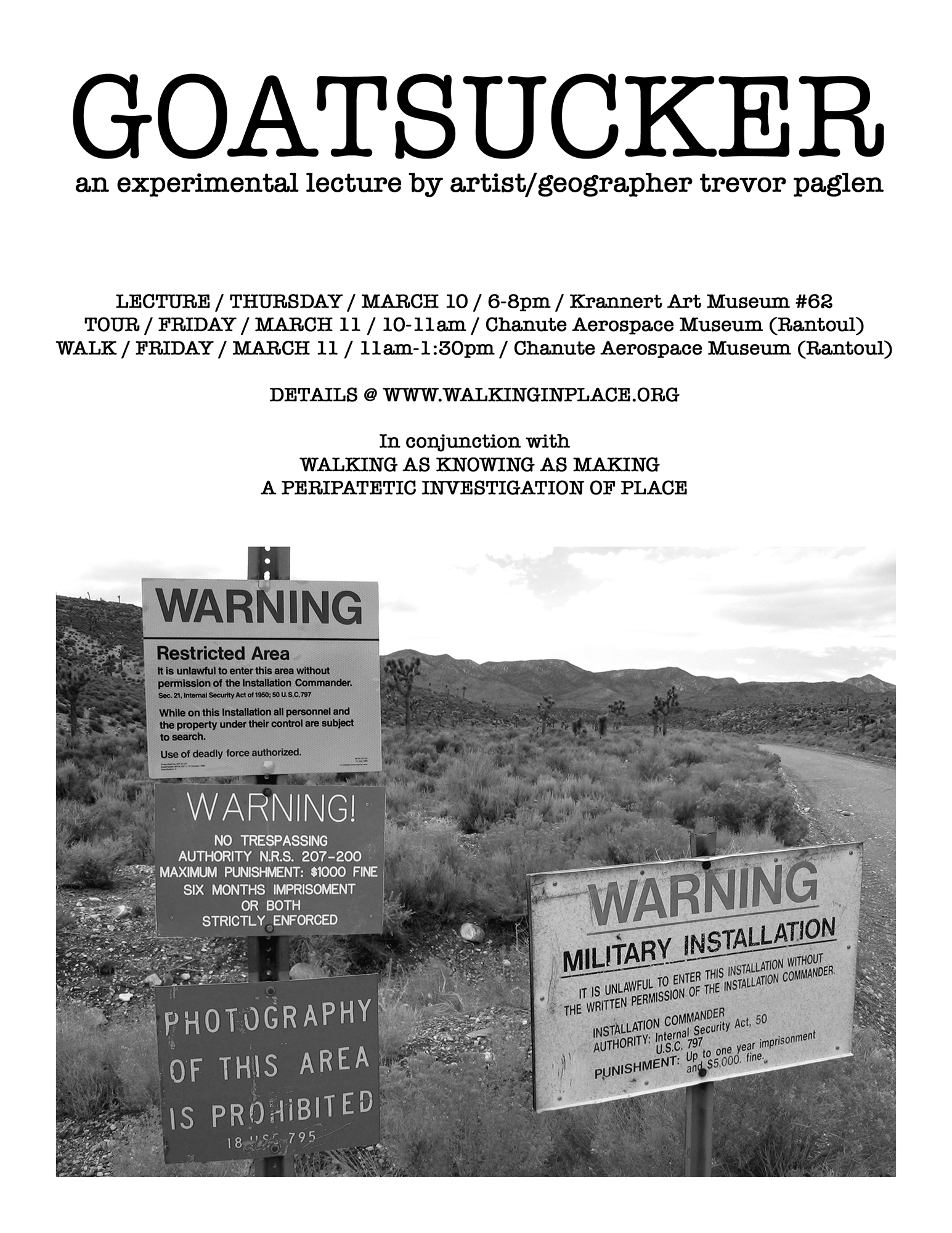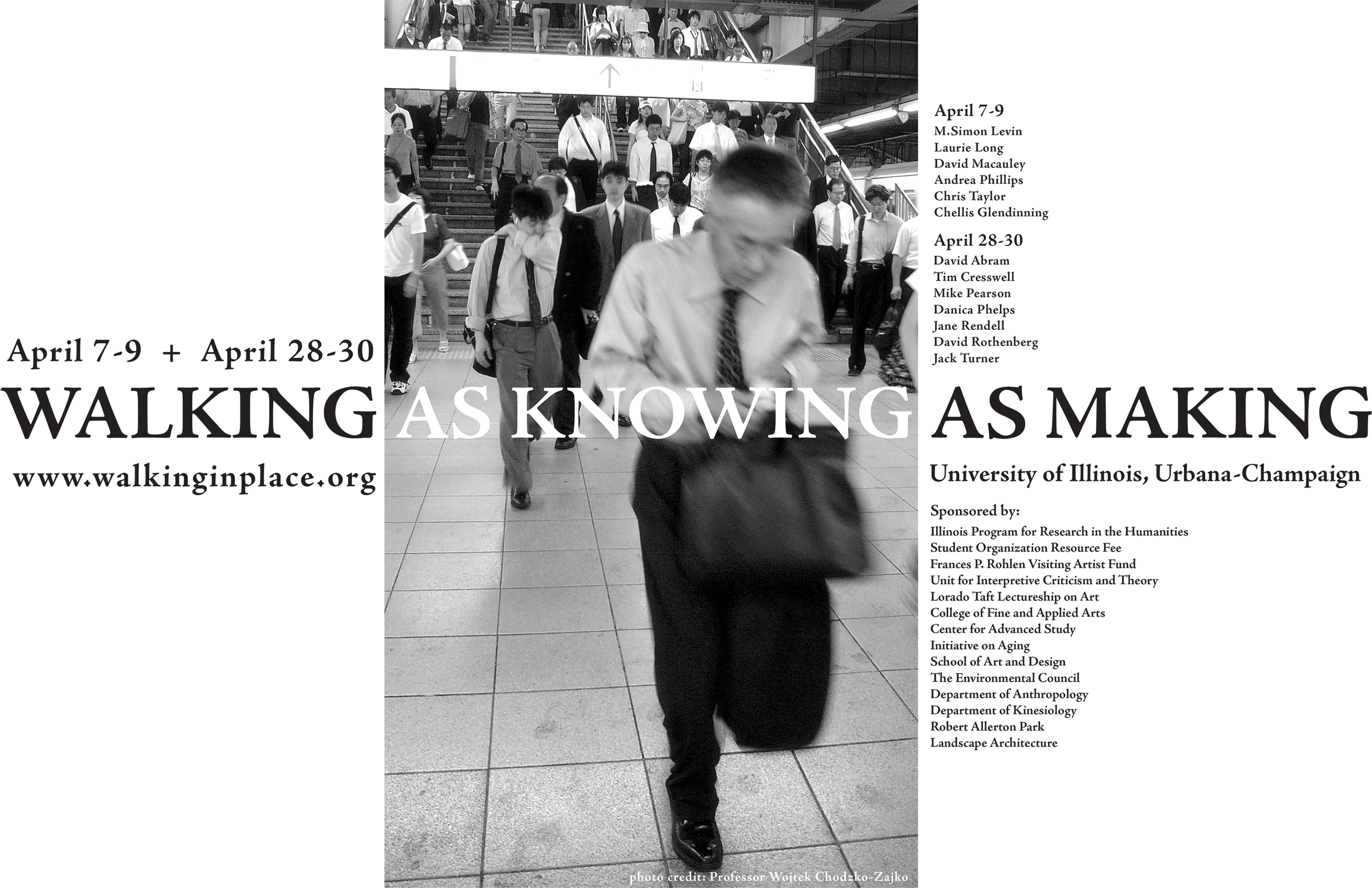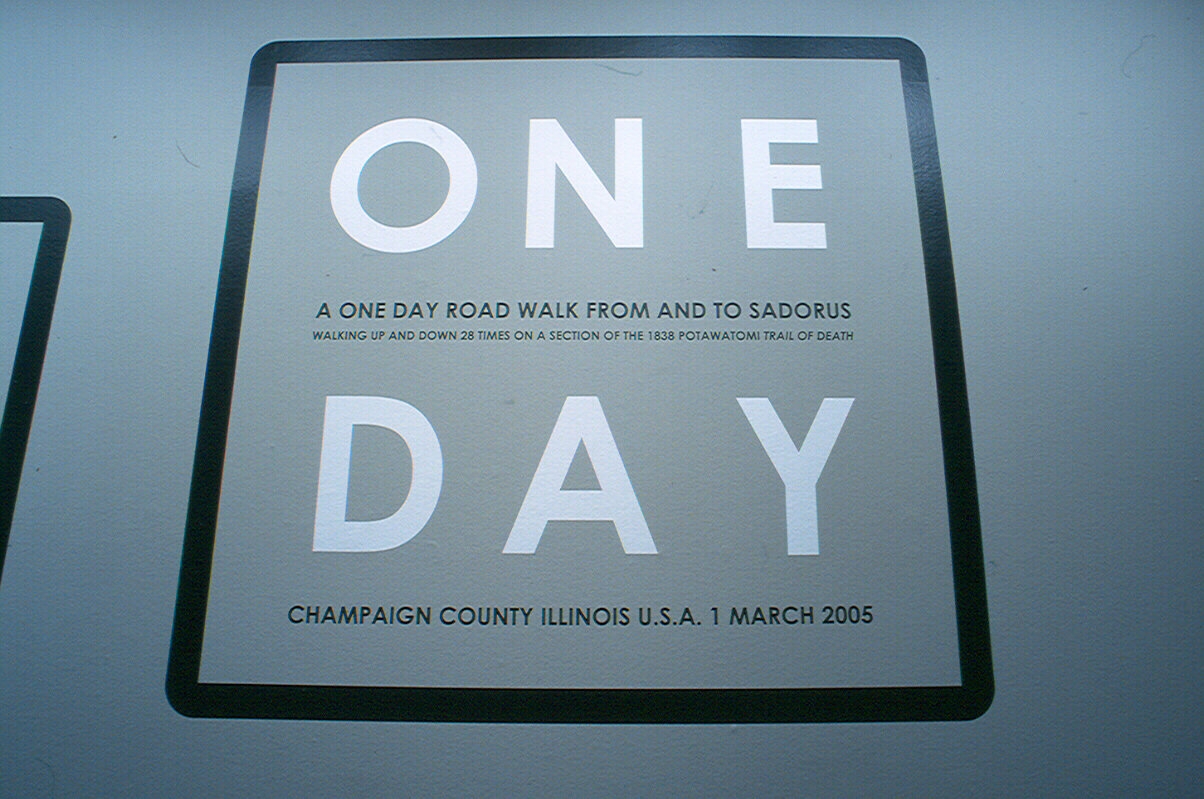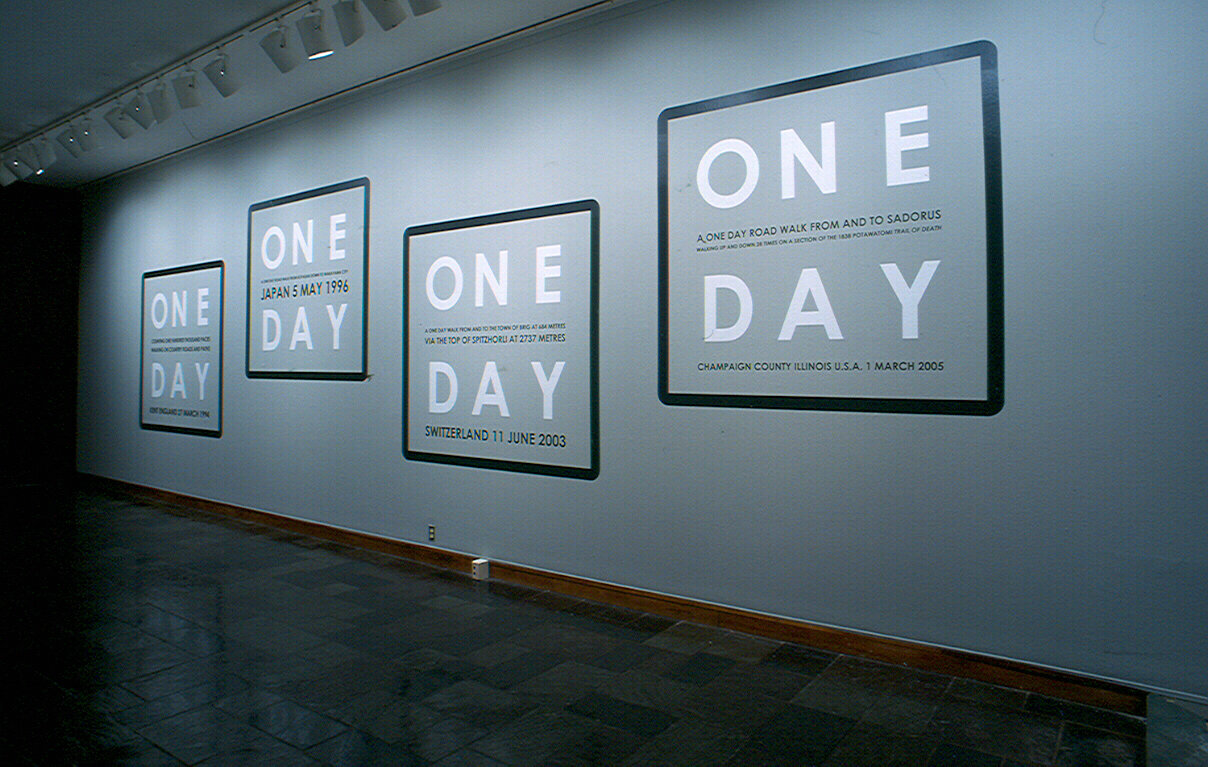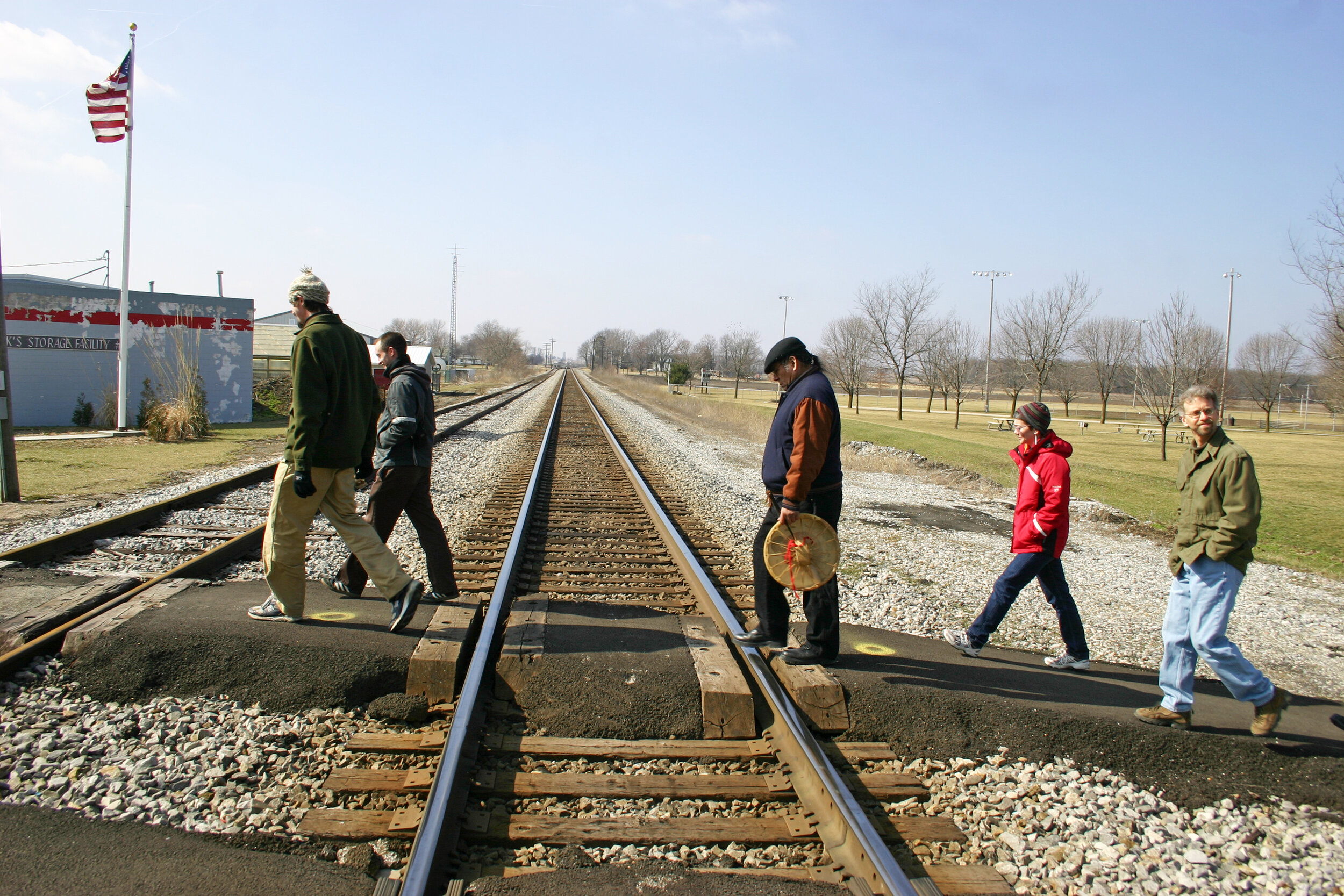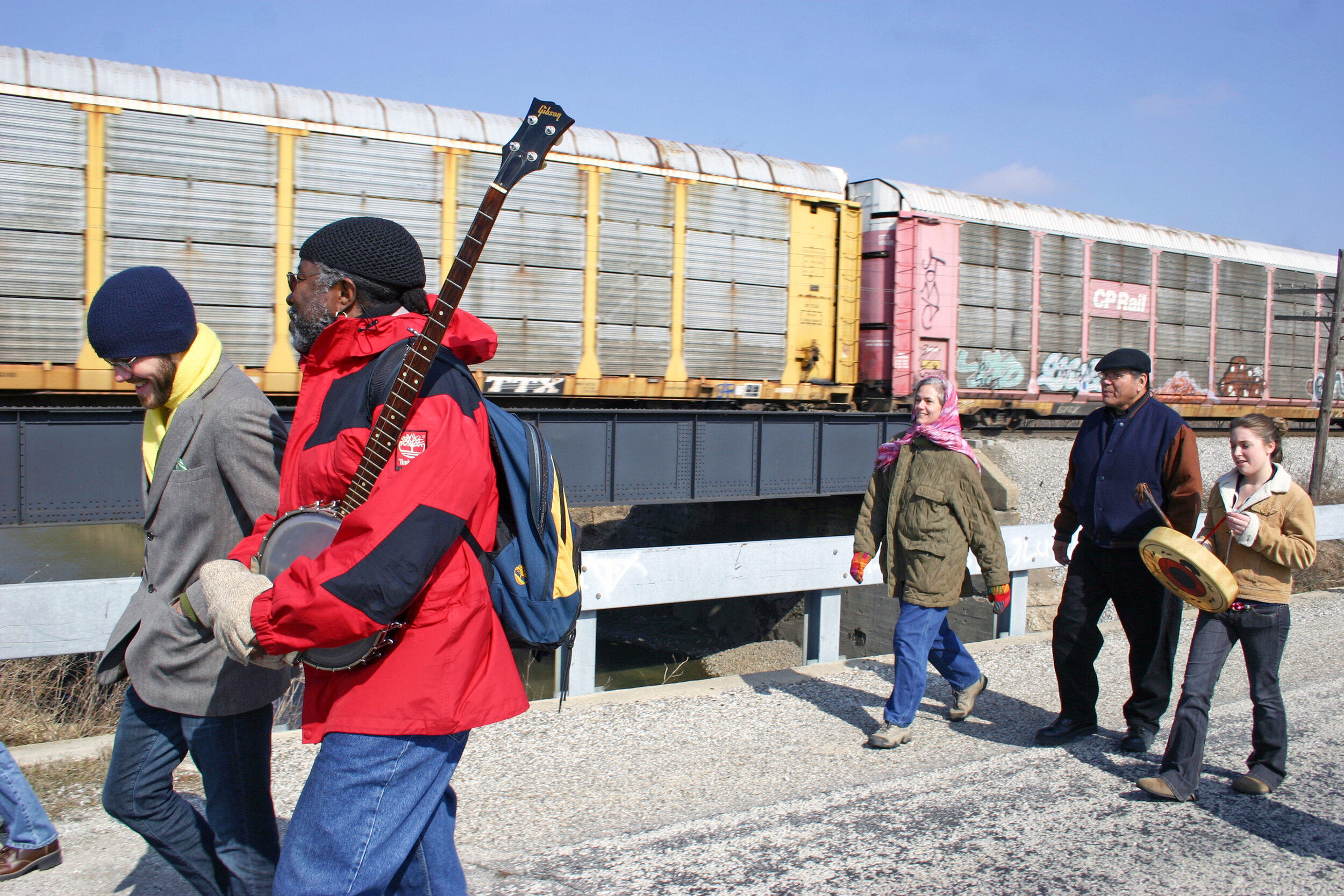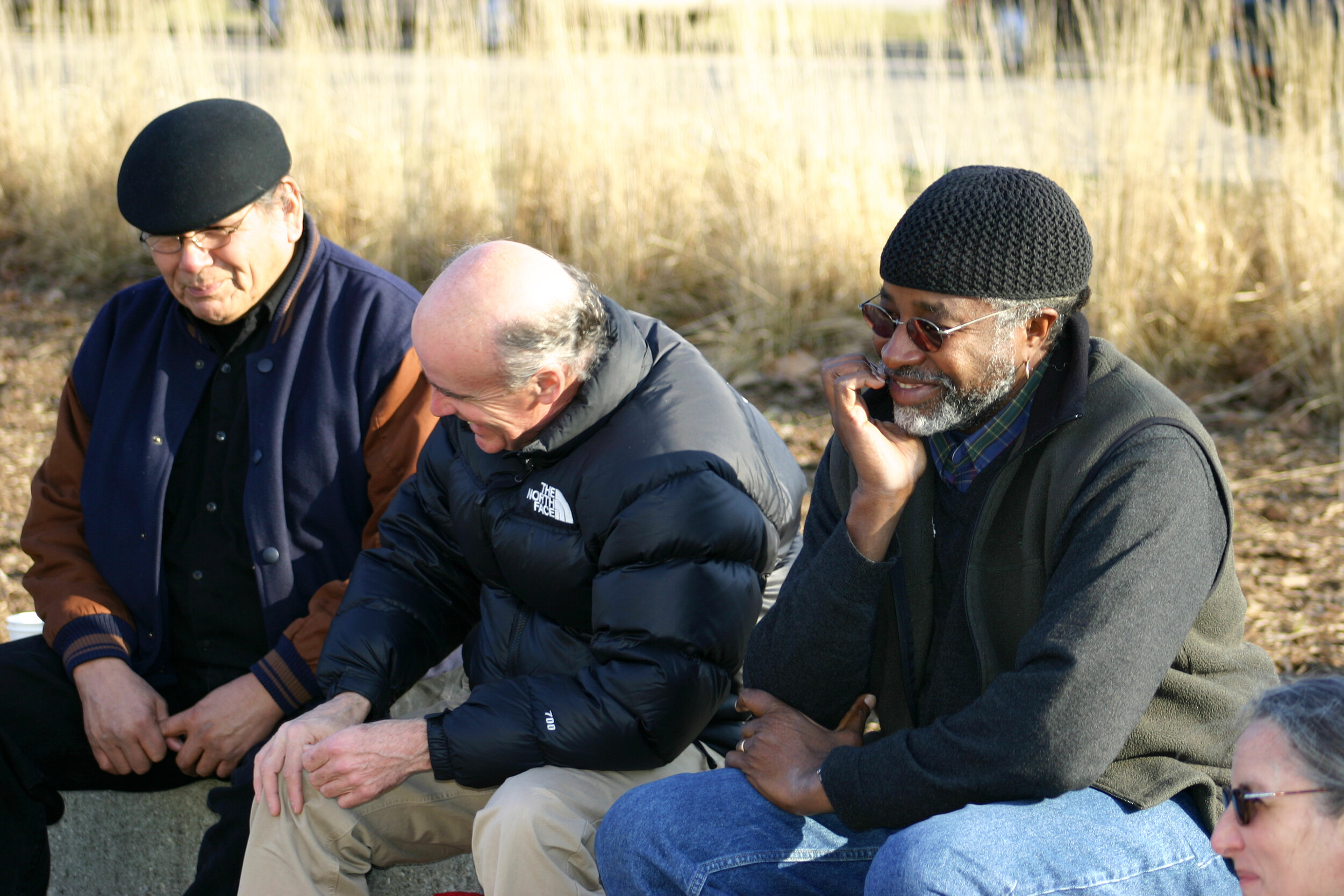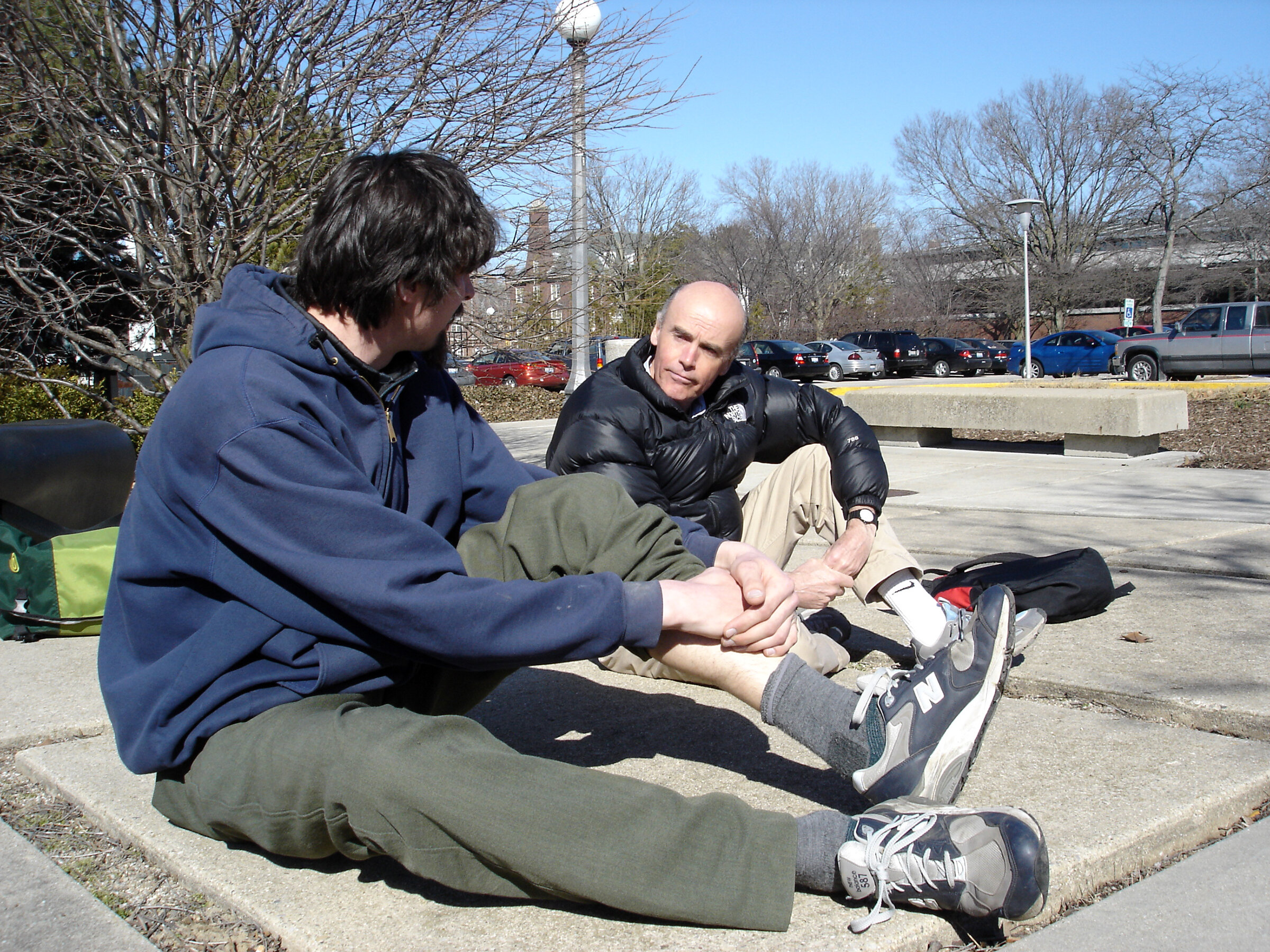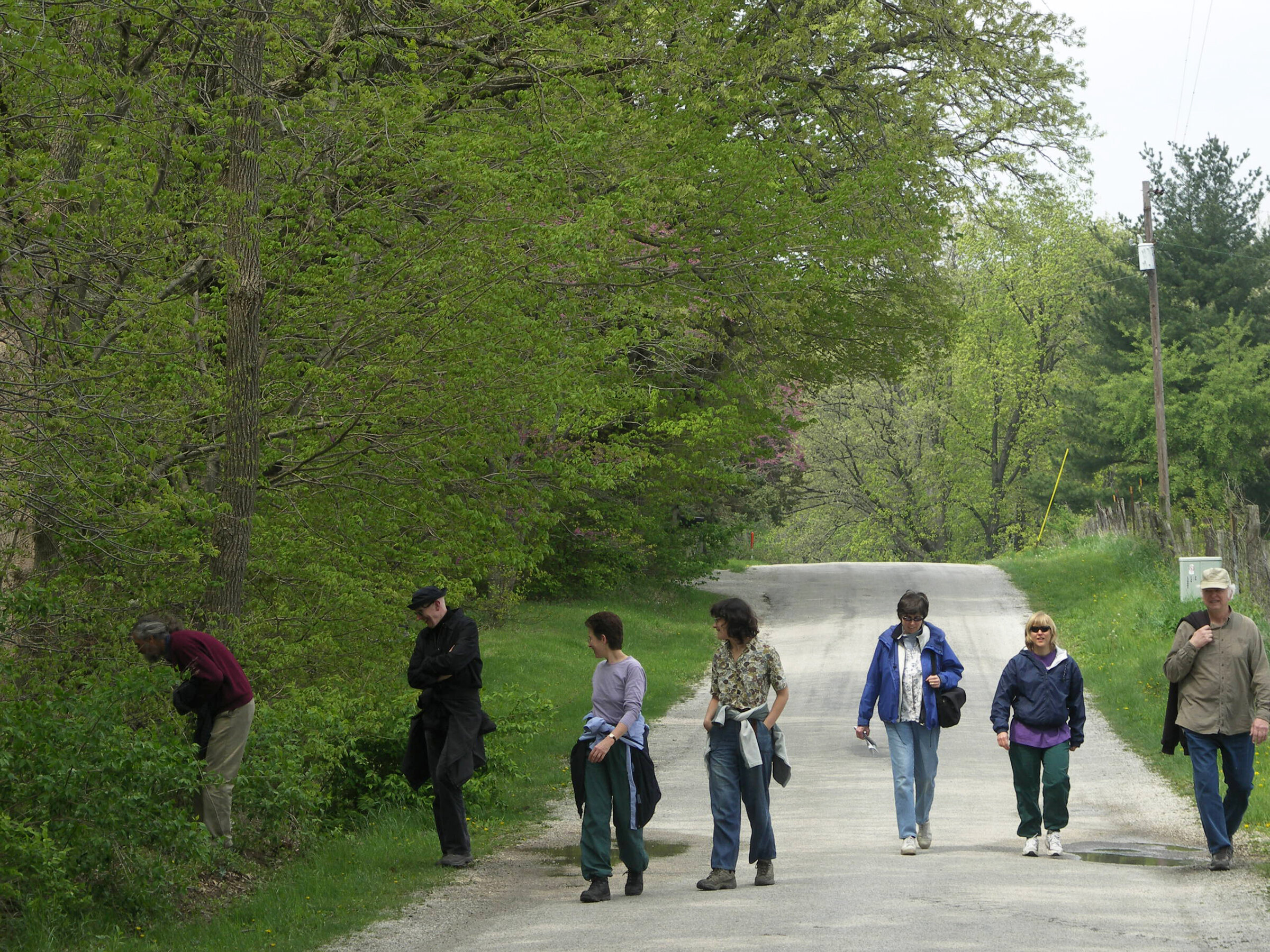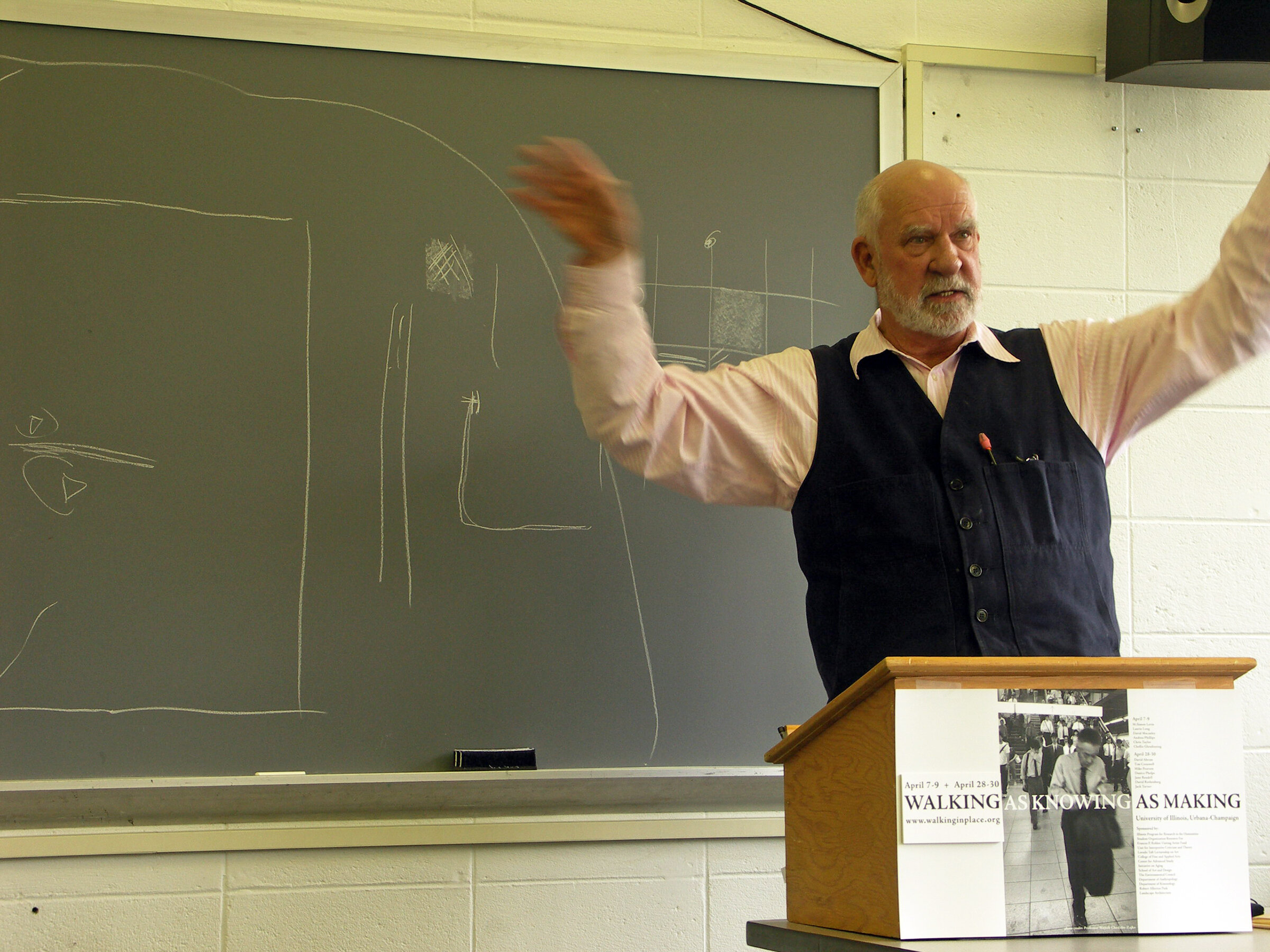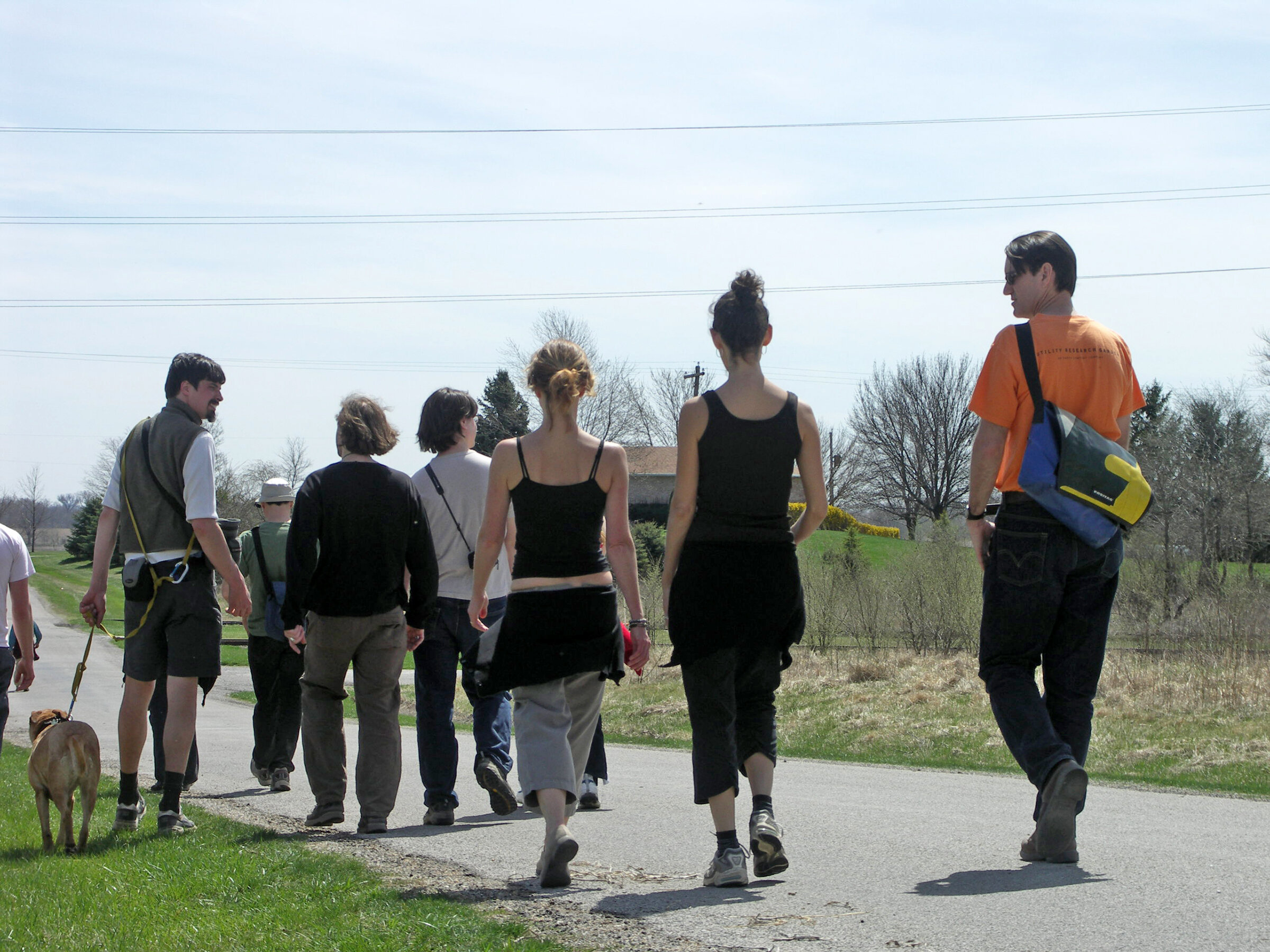Walking as Knowing as Making / A Peripatetic Investigation of Place
“We learn a place and how to visualize spatial relationships, as children, on foot and with imagination. Place and the scale of space must be measured against our bodies and their capabilities.”
Walking as Knowing as Making / A Peripatetic Investigation of Place
Organized by Nicholas Brown & Kevin Hamilton
University of Illinois, Urbana-Champaign
Spring 2005
VISIT WALKING AS KNOWING AS MAKING WEBSITE
In early spring of 2004 the New York Times reported on a recent study of aging adults. An inconspicuous three sentence news brief, noticeable only upon the closest of readings, stated in no uncertain terms: WALK MORE, THINK BETTER, “… In a study done by researchers at the University of Illinois, 41 adults ages 58 to 78 began an exercise program that gradually increased to 45-minute walks three times a week. After three months the participants increased brain activity and had an 11 percent improvement on decision-making tests.” That the conclusion seems rather self-evident suggests both a general recognition of the diminished role of walking in our contemporary lives and an intuitive understanding that walking is somehow good for us. It’s as though our bodies possess some vestigial memory of their own evolutionary heritage or as if our minds had indirectly absorbed fragments of the ongoing conversation facilitated by people such as Paul Shepard, Aldo Leopold, Lewis Mumford, and Henry David Thoreau.
Despite its ubiquity in the everyday walking is an activity obscured by its own practical functionality. It is employed literally and understood metaphorically as a slow, inefficient, and increasingly anachronistic means to a predetermined end. Rarely is walking considered as a distinct mode of acting, knowing, and making. As its necessity diminishes and its applications rarefy, the potential of walking as critical, creative, and subversive tool appears only to grow. Conceived of as a conversation between the body and the world, walking becomes a reciprocal and simultaneous act of both interpretation and manipulation; an embodied and active way of shaping and being shaped that operates on a scale and at a pace embedded in something seemingly more authentic and real.
Based in Urbana-Champaign at the University of Illinois, Walking as Knowing as Making is a multifaceted effort that seeks to nurture both a theoretical and applied approach to knowing and interpreting place as we experience and construct it through walking. Using the walk as a guiding metaphor the format of this symposium has been designed to encourage a sustained, rigorous, and layered yet experimental, diffuse, and meandering consideration of walking and its associated activities, systems, and values. Between February and May 2005 we will bring to campus a diverse group of scholars, activists, and pedestrians to present ideas, engage in conversation, generate questions, tell stories, and, of course, walk. Supplementing and also weaving together this series of convergences will be a new interdisciplinary course about walking, an informal film series about place, a reading group, a series of informational and experimental walks and tours, production of a monthly sound collage for broadcast on local community radio stations, a museum exhibition, and a digital and print archive of all the events and activities.
Set in what was once a vast expanse of tallgrass prairie and what is now a relatively homogeneous landscape dominated by corn and soybean, the apotheosis of modern industrialized agriculture, the University of Illinois provides a unique, if not slightly ironic context in which to consider walking as a distinct way of knowing. Far from any traditional destinations and lacking all but the slightest topographic variation, walking in central Illinois often seems an anomaly — acutely out of sync, both spatially and temporally, with our lives, the land, and our expectations for how the two should interact. Given its history this region does however offer fertile ground for any consideration of the relationship between ways of knowing and ways of making. The prairie, perceived by early European settlers to be nothing more than a stubborn impediment to progress, was eventually tamed by the application of an unwavering grid and the invention of the stainless steel plow and steam engine. It is precisely from the vantage of these signature products of the Englightenment and Industrial Revolution that we can begin to understand the present day configuration and composition of Illinois.
Susan Sontag once said that an artist is someone who is interested in everything. The College of Fine and Applied Arts is, in this way, uniquely positioned within the University. Eschewing reflexive specialization while encouraging critical experimentation, the College is ideally suited to engage an expansive subject that moves casually between and through the gamut of academic disciplines all the while resisting easy classification and appropriation.
It is our challenge to re-learn this place on foot and with imagination. Please join us for what we hope will be a stimulating conversation about walking.
Participants: David Abram, Dennis Banks, Tim Cresswell, John Francis, Hamish Fulton, Chellis Glendinning, M. Simon Levin & Laurie Long, David Macauley, Trevor Paglen, Mike Pearson, Danica Phelps, Andrea Phillips, Jane Rendell, David Rothenberg, Gary Snyder, Chris Taylor, Jack Turner, Anne Wallace



